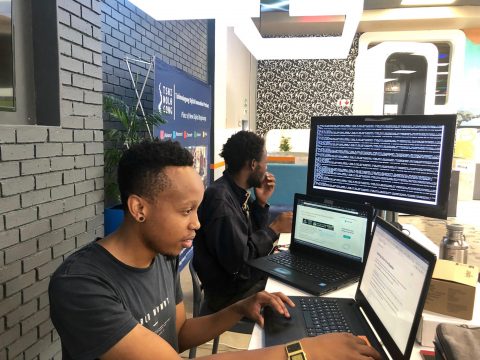Sunday Times Green
Leave It To The Children
One Friday last May, hundreds of thousands of students from more than 1 600 global cities, walked out of their schools to protest climate change in a strike action that was inspired by the actions of Swedish teenager, Greta Thunberg (16).
Thunberg, considered a Next Generation Leader by TIME magazine and recently featured on its cover, took a singular stance outside her country’s parliament on 20 August 2018, in effect breaking the law by not attending school, and has maintained this almost every Friday since then. Her Skolstrejk för klimatet (School strike for the climate) resonated with other scholars who similarly feel that their future is threatened by governments not having taken sufficient climate change action.
Thunberg has since addressed the World Economic Forum, at its Davos conference, and parliaments around the world. She has helped to inspire the #FridaysforFuture and #ClimateStrike movements, which are endorsed by an increasing number of South African students, who joined the first global student climate change strike in March and a second national strike for 14 June.
Chris Engelbrecht, associate professor of physics at the University of Johannesburg, and Sarah Farrell, an environmental communicator, were two of the organisers of the March strike. As Engelbrecht reminds us, South Africa is ranked 14thout of 200 countries for its carbon emissions.
“You’d be shocked how much arable land is gone because of climate change. Our youth are very concerned; it’s their future being impacted,” he says.
“Students join these strikes with no ulterior motive. They are not driven by power, politics or position, instead presenting an innocent, yet powerful, voice that is not conditioned by false information or prejudice. And while there may be, as yet, no direct feedback from government on the student strikes, every action has a part in boosting a larger accumulated message.”
Farrell adds: “Climate chaos has arrived, think Cyclone Idai and Cyclone Kenneth, Day Zero (water) threats and Durban floods. Such occurrences will intensify. We need to put pressure on people in power to phase out fossil fuel reliance, uplift the poverty-stricken, transition to renewable energy, restore living systems, and help us adapt to a changing climate.”
Despite the March strike action capturing the attention of, largely, international media, it doesn’t appear to have been enough to generate a response by local authorities. Farrell expresses her concerns: “We are not seeing concrete plans to address the climate emergency and so we need to keep the pressure on to see change.”
Much of that pressure is going to come from our scholars, as Thunberg proved. “When a teenage girl with selective mutism (only speaks when it is important), becomes a global voice for climate action, it is serious,” says Farrell. “I think that the youth showing leadership is a serious indication of how dire the situation is.”
A SA Perspective
Ruby Sampson (17), right, a pupil at Wynberg Girls High School and South African climate change student activist, says: “The climate strikes are important to me because they allow kids all over the world to show their anger at how their parent’s generation has failed them. We have allowed them to ignore the wisdom of our scientists, we’ve experienced the greed of corporations and the cowardice of politicians for too long.
We don’t have time to wait for the adults to come to some sort of wishy-washy conclusion over the next
10 years, we have to act now. The youth leadership in these climate strikes ensures that no adult can crush our rebellion, telling us of all the ways in which we could fail. We can’t fail, we have to win because if we don’t, we don’t live. None of us.”






 Sign-up and receive the Business Media MAGS newsletter OR SA Mining newsletter straight to your inbox.
Sign-up and receive the Business Media MAGS newsletter OR SA Mining newsletter straight to your inbox.